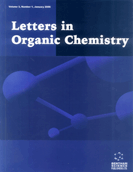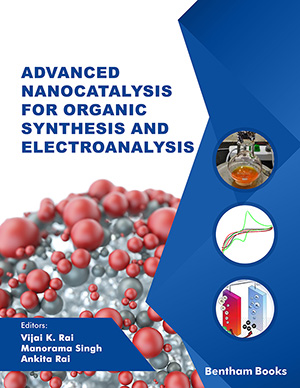Abstract
Flavonoids are polyphenolic compounds that are mainly derived from fruits and vegetables and constitute an essential part of plant-derived beverages such as green tea, wine and cocoa-based products. They have been shown to possess anticancer effects via different mechanisms such as carcinogen inactivation, antiproliferation, cell cycle arrest, induction of apoptosis and differentiation, inhibition of angiogenesis, anti-oxidation and reversal of multidrug resistance or a combination of any two or more of these mechanisms. The present review summarizes the chemistry, biosynthesis and anticancer evaluation of flavonoids in both animal and human studies. A special emphasis has been placed on the flavonoids that are being screened in different phases of clinical trials for chemoprotective action against various cancers.
Keywords: Flavonoids, anticancer, chemoprotection, clinical trials, apoptosis, antiproliferation.
[http://dx.doi.org/10.1016/j.tifs.2020.06.002]
[http://dx.doi.org/10.1016/j.intimp.2020.106498] [PMID: 32304996]
[http://dx.doi.org/10.1016/j.ejmech.2017.07.034] [PMID: 28793973]
[http://dx.doi.org/10.1021/acs.chemrev.7b00020] [PMID: 28488435]
[http://dx.doi.org/10.1017/jns.2016.41] [PMID: 28620474]
[http://dx.doi.org/10.1016/j.ajps.2017.08.004] [PMID: 32104374]
[http://dx.doi.org/10.1080/00958972.2019.1669022]
[http://dx.doi.org/10.1021/np9904509] [PMID: 10924197]
[http://dx.doi.org/10.1002/cbdv.201600060] [PMID: 27449823]
[http://dx.doi.org/10.1016/j.foodchem.2019.125124] [PMID: 31288163]
[http://dx.doi.org/10.3390/molecules191219610] [PMID: 25432012]
[PMID: 30083195]
[http://dx.doi.org/10.1016/j.sjbs.2014.11.012] [PMID: 26150744]
[http://dx.doi.org/10.1155/2016/6057434] [PMID: 27366737]
[http://dx.doi.org/10.1016/j.jfca.2009.01.019]
[http://dx.doi.org/10.3746/pnf.2019.24.3.327] [PMID: 31608259]
[http://dx.doi.org/10.1186/1475-2891-3-5] [PMID: 15140261]
[http://dx.doi.org/10.3389/fpls.2012.00222] [PMID: 23060891]
[http://dx.doi.org/10.5941/MYCO.2011.39.4.257] [PMID: 22783113]
[http://dx.doi.org/10.1007/978-0-387-28822-2_3]
[http://dx.doi.org/10.1016/S1369-5266(02)00256-X] [PMID: 11960739]
[http://dx.doi.org/10.3390/cancers11010028] [PMID: 30597838]
[http://dx.doi.org/10.1016/j.mam.2017.10.003] [PMID: 29146101]
[http://dx.doi.org/10.1016/j.ijantimicag.2005.09.002] [PMID: 16323269]
[http://dx.doi.org/10.1007/s11101-018-9591-z]
[http://dx.doi.org/10.1002/ptr.6208] [PMID: 30346068]
[http://dx.doi.org/10.3389/fphar.2019.01295] [PMID: 31749703]
[http://dx.doi.org/10.1039/c0fo00103a] [PMID: 21776454]
[http://dx.doi.org/10.1111/jphp.12032] [PMID: 23600393]
[http://dx.doi.org/10.1016/0955-2863(95)00168-9]
[PMID: 8341277]
[http://dx.doi.org/10.1371/journal.pone.0074881] [PMID: 24098354]
[http://dx.doi.org/10.1016/j.jaim.2017.01.008] [PMID: 28917550]
[http://dx.doi.org/10.3389/fphar.2018.00760] [PMID: 30061831]
[http://dx.doi.org/10.4103/0973-7847.79093] [PMID: 22096313]
[http://dx.doi.org/10.1111/jfpp.13588]
[http://dx.doi.org/10.1007/BF02974647] [PMID: 9875480]
[http://dx.doi.org/10.1155/2012/749310] [PMID: 23316231]
[http://dx.doi.org/10.1155/2012/282570] [PMID: 23320169]
[http://dx.doi.org/10.1038/sj.bjc.6606032] [PMID: 21119663]
[http://dx.doi.org/10.3945/ajcn.113.071357] [PMID: 24920034]
[http://dx.doi.org/10.1002/med.10033] [PMID: 12710022]
[http://dx.doi.org/10.1093/jn/130.2.472S] [PMID: 10721932]
[http://dx.doi.org/10.1093/ajcn/81.1.284S] [PMID: 15640492]
[http://dx.doi.org/10.1089/cbr.1996.11.193] [PMID: 10851537]
[http://dx.doi.org/10.2131/jts.27.57] [PMID: 11915369]
[http://dx.doi.org/10.1093/carcin/bgg184] [PMID: 14514663]
[http://dx.doi.org/10.1207/S15327914NC3602_12] [PMID: 10890034]
[http://dx.doi.org/10.1093/carcin/18.5.957] [PMID: 9163681]
[http://dx.doi.org/10.1002/(SICI)1097-0215(19971127)73:5<719:AID-IJC18>3.0.CO;2-0] [PMID: 9398052]
[http://dx.doi.org/10.1002/mc.20223] [PMID: 16637061]
[http://dx.doi.org/10.3892/ijo.26.1.169] [PMID: 15586237]
[http://dx.doi.org/10.1002/1097-0215(20000815)87:4<595:AID-IJC21>3.0.CO;2-5] [PMID: 10918203]
[http://dx.doi.org/10.1023/A:1013133803806] [PMID: 11827069]
[http://dx.doi.org/10.1158/0008-5472.CAN-07-0717] [PMID: 17638904]
[http://dx.doi.org/10.1016/j.bcp.2006.12.028] [PMID: 17250812]
[http://dx.doi.org/10.1093/carcin/12.7.1193] [PMID: 2070483]
[PMID: 8895742]
[http://dx.doi.org/10.1093/carcin/17.4.877] [PMID: 8625504]
[PMID: 3139283]
[http://dx.doi.org/10.1016/0304-3835(94)90416-2] [PMID: 7954363]
[http://dx.doi.org/10.1016/0304-3835(88)90232-7] [PMID: 3141040]
[http://dx.doi.org/10.1016/j.semcancer.2007.06.013] [PMID: 17686632]
[PMID: 9205068]
[PMID: 1617663]
[http://dx.doi.org/10.3892/ijo.18.6.1307] [PMID: 11351267]
[http://dx.doi.org/10.1046/j.1525-1373.1999.d01-46.x] [PMID: 10202402]
[http://dx.doi.org/10.1002/jcb.1261] [PMID: 11746506]
[http://dx.doi.org/10.1093/jn/133.7.2417S] [PMID: 12840218]
[http://dx.doi.org/10.1093/carcin/18.12.2361] [PMID: 9450482]
[PMID: 9157981]
[http://dx.doi.org/10.1093/carcin/19.3.501] [PMID: 9525286]
[http://dx.doi.org/10.1093/carcin/21.5.915] [PMID: 10783312]
[http://dx.doi.org/10.1016/S0278-6915(99)00021-6] [PMID: 10418948]
[http://dx.doi.org/10.1016/0304-3835(95)03833-I] [PMID: 7621439]
[http://dx.doi.org/10.1093/carcin/21.5.937] [PMID: 10783315]
[http://dx.doi.org/10.1002/pros.21017] [PMID: 19670229]
[PMID: 11559550]
[http://dx.doi.org/10.1016/S0304-3835(01)00811-4] [PMID: 12183070]
[http://dx.doi.org/10.1093/jn/134.5.1207S] [PMID: 15113973]
[PMID: 3167843]
[PMID: 9816216]
[http://dx.doi.org/10.1023/A:1008372017097] [PMID: 11300332]
[http://dx.doi.org/10.1158/1078-0432.CCR-040020] [PMID: 15217973]
[http://dx.doi.org/10.1097/01.cad.0000127332.06439.47] [PMID: 15166614]
[http://dx.doi.org/10.1023/A:1006353008903] [PMID: 10665481]
[PMID: 11892928]
[http://dx.doi.org/10.1038/sj.leu.2401994] [PMID: 11243375]
[http://dx.doi.org/10.1002/ijc.22790] [PMID: 17471564]
[http://dx.doi.org/10.1038/sj.bjc.6601271] [PMID: 14520456]
[http://dx.doi.org/10.1111/j.1349-7006.2007.00540.x] [PMID: 17627618]
[PMID: 8877056]
[http://dx.doi.org/10.1093/oxfordjournals.aje.a009257] [PMID: 9247006]
[http://dx.doi.org/10.1002/ijc.23421] [PMID: 18338754]
[http://dx.doi.org/10.1093/jaoac/89.4.1121] [PMID: 16915855]
[http://dx.doi.org/10.1038/sj.bjc.6605073] [PMID: 19436304]
[http://dx.doi.org/10.21037/jtd.2017.02.75] [PMID: 28449441]
[http://dx.doi.org/10.3322/caac.21590] [PMID: 31912902]
[PMID: 28900321]
[PMID: 11201979]
[http://dx.doi.org/10.1021/acs.jnatprod.5b01055] [PMID: 26852623]
[http://dx.doi.org/10.1016/j.jff.2015.06.018]
[http://dx.doi.org/10.3389/fimmu.2019.00051] [PMID: 30766532]
[http://dx.doi.org/10.3390/nu8100659] [PMID: 27775647]



























